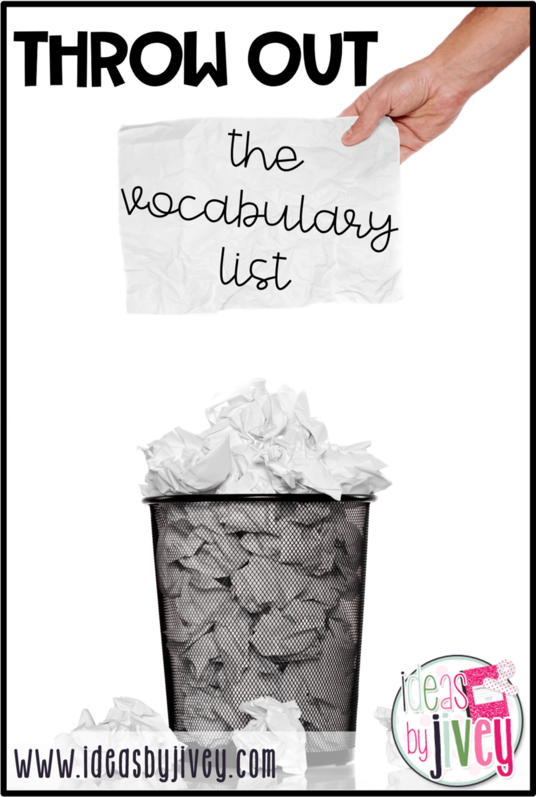Menu
Give a list of vocabulary words to look up in the dictionary, write a sentence, and then take a quiz on Friday…… these practices have come and gone! Not only do the students not enjoy this process, it isn’t a best practice.
Research has shown that teaching new words without context (teaching just definitions) will not improve reading comprehension. Here are three BIG reasons, supported by research, why you should throw out the vocabulary list. And if you want to read even more, I suggest starting with No More “Look Up The List” Vocabulary Instruction by Charlene Cobb and Camille Blachowicz, as well as Bringing Words to Life by Isabel Beck, Margaret McKeown, and Linda Kucan! (These two book links are Amazon affiliate links. When you buy through these links, Amazon gives me a few cents which I contribute to my fabulous blog giveaways!)
Picture books are vital – yes, even in the upper grades – to allow students to use the images to help with context and infer meaning of words. One way to present vocabulary words effectively is to teach through texts you are already using for other lessons. As Irene Fountas and Gay Pinnell remind us in Guiding Readers and Writers (2001), “if you really know a word, you can:
In order to effectively employ vocabulary instruction, it is crucial to present opportunities for students to make connections between the words and concepts, and provide repeated exposures to the words. One suggestion from Charlene Cobb and Camille Blachowicz is to have a word wall- but not one that remains on the wall untouched all year. It should be used regularly, with student input.
 Think of how many words can be used as a noun, an adjective, AND a verb, depending on how it is used, or even as one part of speech having several meanings. How are students supposed to figure this out when given a list? Answer: they don’t. They pick the shortest definition and write it!
Think of how many words can be used as a noun, an adjective, AND a verb, depending on how it is used, or even as one part of speech having several meanings. How are students supposed to figure this out when given a list? Answer: they don’t. They pick the shortest definition and write it!
You probably know, previewing is so important for comprehension… but that rule does not apply to vocabulary, unless you present it completely in context! In other words, it is not necessary to always “preview” words before reading a text, because the students don’t understand the context. Beck, McKeown, and Kucan advise the best time to introduce the meaning of a word is when it is encountered in the text. This can also be done after reading the entire text by referring back to the pages where the word is found.

GO BACK

GO BACK
Read the next post of this vocabulary blogging series!